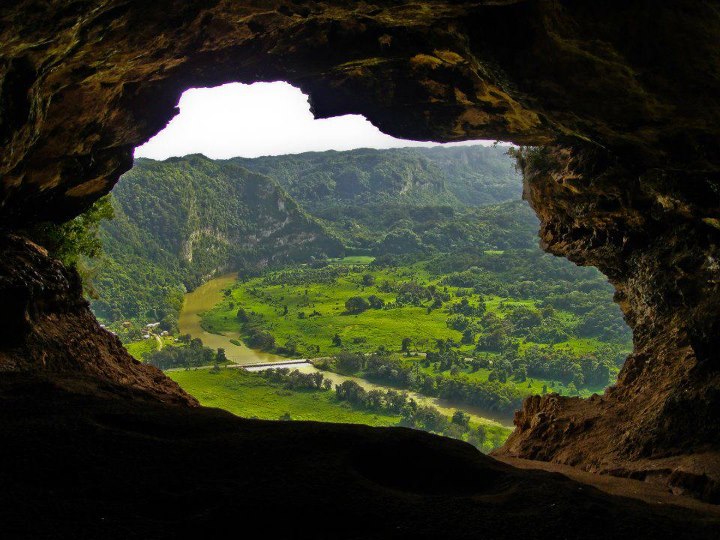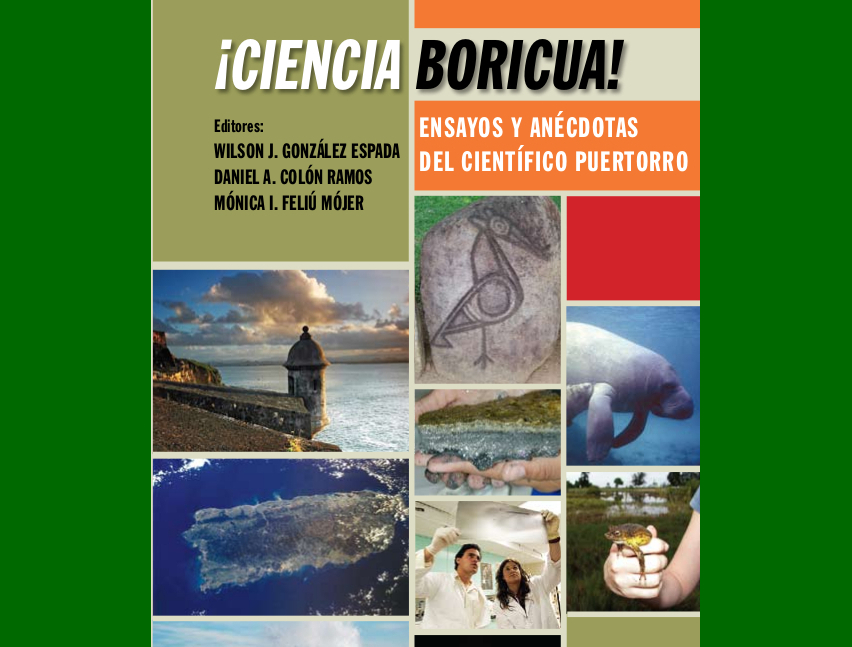Looking at Science and Technology through the eyes of Design
Submitted by Wilfredo Mendez Vazquez on
History clearly tells us that science, technology, engineering and mathematics have constantly crossed their paths with art and design. Let’s think about Leonardo Da Vinci in the 15th century, most of his projects showed an equal application of technical and artistic knowledge. After centuries, during which governments addressed their attention to the arts (e.g. kings and popes supporting Michelangelo), the Industrial Revolution, started at the end of the 18th century, moved the attention toward technical disciplines as main tools for economic growth. Therefore, the acronym STEM was coined to refer to four principal disciplines: Science, Technology, Engineering and Mathematics.
Once more, things are changing. Recently, John Maeda, Rhode Island School of Design’s former president, created the STEAM concept, including Art among Science, Technology, Engineering and Mathematics. Today, Puerto Rico is part of this conceptual transformation process too, but from a different point of view, that of Design, a discipline that combines Craft and Arts.
STEMplusD is a project that aims to investigate and promote the progressive integration of sciences and technologies with the different faces of design: fashion design, industrial design, architecture and interior design. STEMplusD supports and promotes professional and young Puerto Rican designers who are interested in exploring the opportunities of interaction between scientific disciplines and design, in order to create artifacts originated by artistic concepts, artisanship and technological innovations. The project is created and coordinated by the International School of Design and Architecture (EIDA), Universidad del Turabo, Puerto Rico.
“…we decided to add STEMplusD concept, to translate that scientific research into a design project, product or experience”
– Aurorisa Mateo Rodríguez
STEMplusD means Science, Technology, Engineering and Mathematics plus Design. The project proposes a change in common paradigm according to which design is a visual and aesthetical application on scientific and technological creations. The idea is to place Science, Technology, Engineering, Mathematics and Design at the same level. “Considering STEM concept and all the related researches, we decided to add STEMplusD concept, to translate that scientific research into a design project, product or experience”, EIDA’s Dean Arch. Aurorisa Mateo Rodríguez explains. “While STEAM has been mainly developed as educational methodology, we do not only consider STEMplusD concept in academic terms, but we also aim to transfer and develop it into the professional design sector and its best practices”.

What does that mean? The project is focused on studying and establishing the perfect balance between scientific disciplines and design, so that the first would not prevail on the second, and vice versa. First example of STEMplusD concept is the national dress modeled by Gabriela Berríos during Miss Universe 2014, a total-white garment created by fashion designer Jaer Cabán and inspired by Puerto Rican dance. The dress harmonizes the three main STEMplusD principles: design, craft and technology. Both top and skirt include a centennial handicraft, called mundillo lace: while five expert “mundilleras” from Moca’s Mundillo Museum made by hand the lace for the top according to the traditional techniques, STEMplusD digitalized and replicated it with the laser-cut machine for the overskirt. This way, Puerto Rico national dress combined technological and handcrafted elements into a dress tailored according to Haute Couture standards.



“I worked together with Jaer Cabán to find a way to use the laser-cut technology for a fashion purpose, and with FabLab’s technical director Carlos Silva, who worked with the laser-cut machine to reproduce the mundillo lace”, EIDA’s Fashion Design Program professor and coordinator Cristiano Carciani says. “I think that this transition from the traditional handmade bobbin lace to a new technological version (some sort of a new-born-artisanship) is very interesting. The result is a wonderful and original dress that demonstrates how it is possible to combine craft, fashion design and technology”.
The activity was an opportunity to reflect upon the integration between technology and fashion or, more specifically, Haute Couture. The new millennium has been characterized by the creation of products and designers experimenting new combinations of design and technology, generally tagged as “wearable technology” or “fashion technology”. These products/outcomes highlight a pronounced tendency in standing out technological features, but this often goes to the detriment of fashion design.
Although this kind of experimentations demands by nature freedom in employing methods and means, it emerges the necessity of clearly defining the concept and principles of these new trends within the framework of fashion design. This is the reason why STEMplusD’s team is beginning a research to identify the basic criteria that should rule the integration between current/future technologies and fashion design, in order to avoid that innovative elements overlap the essence of design.
The researchers defined the combination of Haute Couture with technological innovations as “TechCouture”. They expect to involve top exponents - such as Iris van Herpen, Ying Gao, CuteCircuit, Nervous Systems, Pauline van Dongen - to create the “Manifesto of TechCouturism”. This will list the characteristics that designers should follow, so that their creations could be considered as good mixes of technology and Haute Couture. A procedure similar to what Filippo Marinetti did in writing the “Manifesto of Futurism” in 1909!
Read our interview to STEMplusD managers:
………………………………………………………………………………………………………………………………


W.Mendez: Recently, the integration between design and science has been well introduced in diverse universities in USA and Europe. What anxieties lead you to conclude that this concept should be adopted in Puerto Rico too?
STEMplusD: We need to remember that the integration of science is an intrinsic concept within design itself: while searching for a good compromise between form (art) and function (artisanship), designers are awake on scientific and technological improvements to be adapted to their needs, always according to the functional and formal aspects of their projects. For a century, STEM disciplines have been considered as the main factors for economic growth. Market saturation and the lack of innovative ideas clearly showed that creativity (a characteristic of arts and design) was necessary for a new economic impulse. After John Maeda theorized, at the beginning of our century, the transition from STEM to STEAM (A as Arts), the collaboration/integration between science and design is being accepted in political, economic and educational areas. According to this global trend, STEMplusD recognizes the need of introducing, developing and applying the concept of integration in Puerto Rico, both in educational and professional levels. This way, the project not only encourages the country to participate to this international debate, but also works to impact on the development of the island.
W.Mendez: In Puerto Rico, what are the main issues to introduce STEM through design pedagogy?
STEMplusD: Although our “science + design” vision is not specifically pointed toward the academic world, STEMplusD is aware of two main problems to be faced at the time the concept would be applied to Puerto Rican educative reality. On one hand, although design historically represents the art-craft combo, in Puerto Rico it is generally considered as one of the expressions of the arts. Consequently, local academic curriculums don’t consider design as an independent discipline. Therefore, before applying STEMplusD concept in Puerto Rican education, it will be necessary to create a higher awareness on the meaning and the intellectual content of design. On the other hand, “science + design” concept presumes the voluntary collaboration between the exponents of scientific and liberal arts disciplines. Undoubtedly, there is a wide variety of scientific investigations in Puerto Rico, but researchers don’t know the multiple opportunities that the design world offers and that helps to transform those theories into real products and projects.
W.Mendez: Across the many manifestations and design scales, where does STEMplusD aims to be more protagonic? Why?
STEMplusD: We’re interested in experimenting the integration of sciences into all the different faces of design: from industrial design to fashion design, from architecture to interior design. Our area of interest also includes those branches of design that work for temporary events: scenic, exhibition spaces and promotional areas design is using modern lighting and holographic technologies, such as projection mapping. The development of industrial and architectural design have been always tied to technology, new materials and means, but it has also frequently originated innovations itself. On the other hand, the application of technology to fashion design mainly occurred into production, distribution and sale processes. Only from the beginning of the new millennium, fashion designers started to experiment new opportunities in order to enrich their creations and this led to the recent phenomena of wearable technology and fashion technology. Within this global trend, STEMplusD is currently focused on fashion design projects, managed by Cristiano Carciani.
W.Mendez: Based on the already finished projects of STEMplusD, what STEM dimension clearly highlights over the others: science, technology, engineering or math?
STEMplusD: Actually, it is not easy to draw a line between STEM disciplines: engineering would not exist without mathematics, but, at the same time, engineering and science stimulate technological developments. For example, even if the laser-cut machine is considered a technological product, it is the result of complicated mathematical calculations realized by mechanical engineering, optical science and computational engineering. However, we can say that STEMplusD primarily works with engineering-derived technology, such as 3D printing, laser-cut, CNC, 3D scanning, sophisticated computational softwares and with all the tools available in a Digital Fabrication Laboratory (Fab Lab).
W.Mendez: What is the common composition of your design team for designing your projects?
STEMplusD: We know that multidisciplinary collaborations are necessary to achieve the best results. Each member of the team participates bringing his ideas, skills, academic education, professional experience and, why not, amateur curiosity. The original idea of a designer is immediately shared with the other members: this brainstorming is an essential step for explaining, clarifying, improving, resolving and, finally, proposing a content with an interesting value. As we are exploring the different possibilities offered by digital technology, we also involve, when necessary, experts in digital fabrication and computer engineers, proficient in both conventional systems and open source platforms. Sometimes the innovation does not consist in the physical components, but in the coding process itself.
W.Mendez: In laymen terms, how do you think about the future of STEMplusD? How do you aim to transcend the academics boundaries into the business world?
STEMplusD: We were born as a research and development theoretical concept, focused on encouraging Puerto Rican designers toward the “design + science” combo: our main goal is to be the recognized benchmark for Puerto Rico within the international debate about integration. Tools such as the blog stemplusd.com, our pages on the social media and our research on fashion technology, allow us to access the global networks and maybe, in the future, to be part of the developers of this trend. Although STEMplusD does not have a direct interest on the business world today, we are aware that in the future our current results will have an impact on it. As STEMplusD is a project created and developed by the International School of Design and Architecture of the Universidad del Turabo, we know that our students, one day, will have the possibility to apply our concept as a valid design strategy when entering in the world of work.









